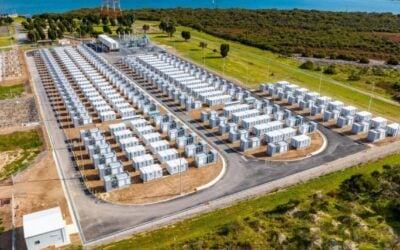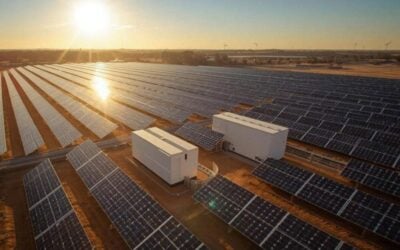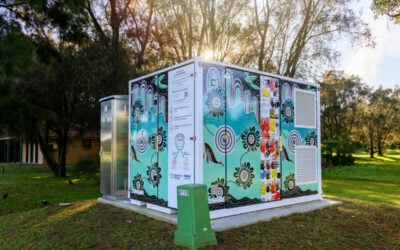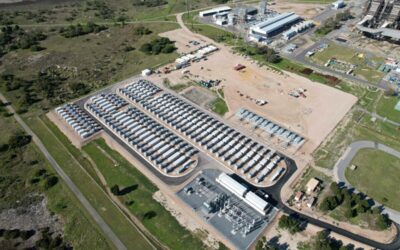The upgraded Powerpack 2 contains a new energy module and power electronics system which provides twice the energy density as its previous version. Credit: Tesla
Energy company Tesla has revealed that it began to ship an updated version of its commercial battery storage solution last month, featuring doubled energy density.
The upgraded version – dubbed Powerpack 2 in a blog post published last week (27 October) – contains a new energy module and power electronics system which provides twice the energy density as its previous version.
The system also comes with a new inverter designed and manufactured by Tesla itself, rather than the previous system which relied upon inverters supplied by Dynapower. Tesla has claimed this “significantly simplifies” the installation of Powerpack systems by integrating a number of components into the inverter while also making the system more cost competitive.
“The Tesla inverter paired with the Powerpack 2 allows storage to be available to the utility industry at price points and with functionality previously unknown.
Try Premium for just $1
- Full premium access for the first month at only $1
- Converts to an annual rate after 30 days unless cancelled
- Cancel anytime during the trial period
Premium Benefits
- Expert industry analysis and interviews
- Digital access to PV Tech Power journal
- Exclusive event discounts
Or get the full Premium subscription right away
Or continue reading this article for free
“Furthermore, the Powerpack system interface and software controls give utilities and grid operators high fidelity control, allowing for better energy management and dispatch, which improves grid performance, efficiency and reliability at a low cost,” the blog states.
Shipments started in September. Tesla also provided a minor update, revealing that it had installed nearly 300MWh of batteries to date.
Last month Camborne Energy Storage completed the installation of Europe’s first Tesla Powerpack alongside Poweri Services, which co-located the 500kWh capacity battery storage system with a 500kWp solar farm in Somerset.
That system is planned to provide grid services, arbitrage and ancillary services such as firm frequency response in the future.
Tesla founder Elon Musk has also unveiled the company’s new solar roof (BIPV) product, which replicates the aesthetics of a traditional roof tile.
The firm has also this week posted a return to profit in Q3 2016.





